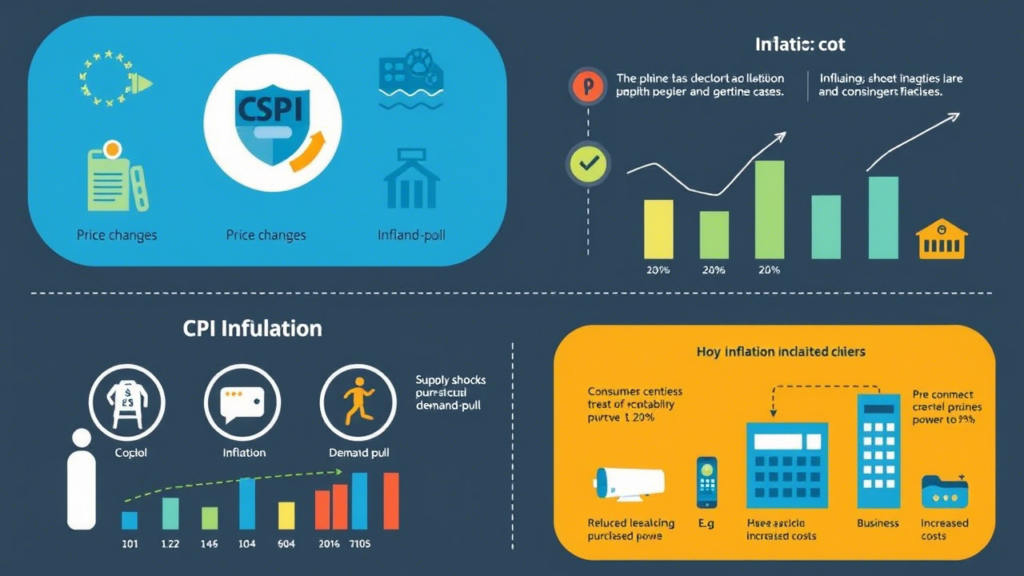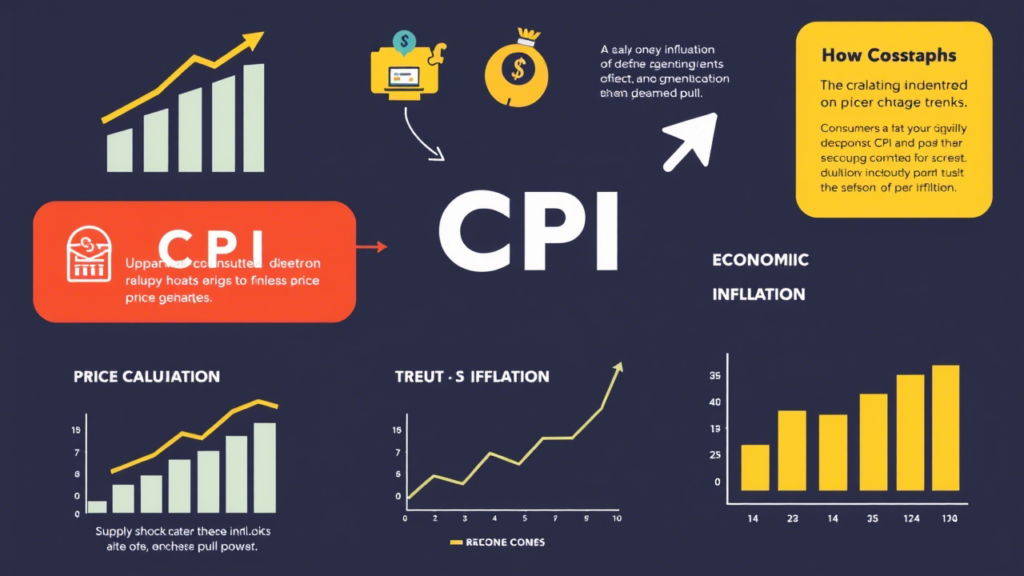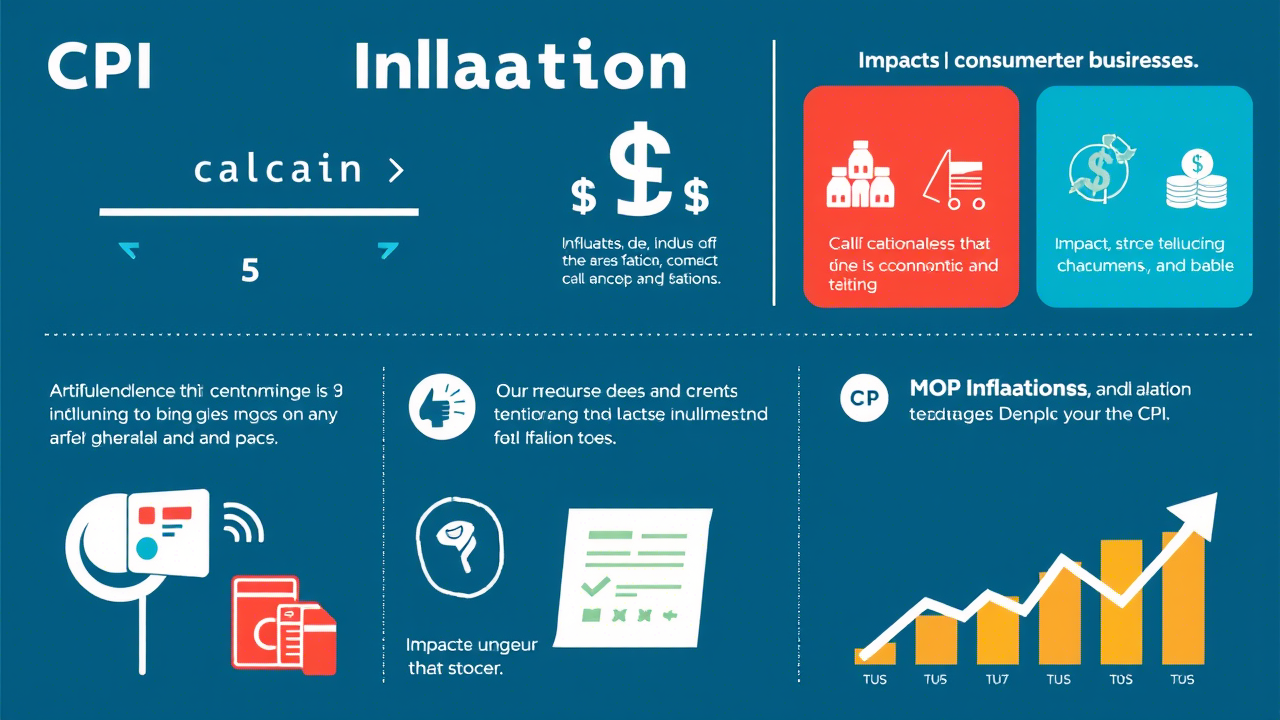What Is the CPI Inflation Rate?
The CPI inflation rate refers to the percentage change in the Consumer Price Index (CPI) over a specific period. It is a critical measure economists and policymakers use to track inflation and understand the cost of living. CPI reflects the average price change of a basket of goods and services commonly purchased by households.
Table of Key Information:
| Aspect | Details |
|---|---|
| Definition | Measures the percentage change in the Consumer Price Index (CPI) over time. |
| Formula | [(Current CPI – Previous CPI) / Previous CPI] x 100 |
| Importance | Impacts purchasing power, economic policies, and investment decisions. |
| Influencing Factors | Supply and demand, energy prices, wages, government policies, exchange rates. |
| Effects on Economy | Affects interest rates, business operations, consumer spending, and financial markets. |
| Comparison | CPI inflation vs. core inflation (excluding food and energy). |
| Strategies to Manage | Investing, budget adjustments, wage negotiations, inflation-protected assets. |
| Predictions | Depends on global economic trends, government policies, and market conditions. |
How Is CPI Inflation Rate Calculated?
The CPI inflation rate is determined by comparing the current CPI value with its previous value. The formula used for calculation is:
A positive CPI inflation rate indicates rising prices, while a negative rate suggests deflation. Government agencies, such as the Bureau of Labor Statistics (BLS) in the U.S., collect CPI data regularly.

Why Does CPI Inflation Rate Matter?
The CPI inflation rate directly impacts everyday life. When inflation rises, purchasing power declines, making goods and services more expensive. Businesses also adjust wages and pricing strategies based on inflation trends. Additionally, central banks use CPI inflation data to set interest rates, influencing borrowing costs and investments.
Factors That Influence the CPI Inflation Rate
Several factors contribute to fluctuations in the CPI inflation rate:
- Supply and Demand: High demand for goods and limited supply increase prices, increasing inflation.
- Energy Prices: Fluctuations in oil and gas prices significantly impact the CPI as energy costs affect transportation and production expenses.
- Government Policies: Fiscal policies, taxation, and subsidies influence overall price levels in the economy.
- Exchange Rates: A weaker currency makes imports more expensive, raising the overall CPI.
- Wage Growth: Higher wages lead to increased consumer spending, potentially driving prices higher.
How CPI Inflation Rate Affects Consumers and Businesses
- For Consumers: Rising inflation means higher costs for essentials like food, housing, and healthcare, reducing savings potential.
- For Businesses: Companies adjust pricing strategies, supply chain management, and wage structures to cope with inflation fluctuations.
- For Investors: Inflation affects stock markets, bond yields, and overall economic stability, influencing investment decisions.
CPI Inflation Rate vs. Core Inflation
Core inflation excludes volatile items such as food and energy, providing a more stable measure. While the CPI inflation rate gives a broad view of price changes, core inflation helps policymakers focus on long-term economic trends.
How to Protect Yourself from Rising Inflation
To manage the impact of inflation, individuals and businesses can adopt these strategies:
- Invest in Inflation-Protected Assets: Real estate, commodities, and Treasury Inflation-Protected Securities (TIPS) offer a hedge against rising prices.
- Diversify Income Sources: Multiple income streams can help mitigate the effects of inflation.
- Monitor Spending: Adjusting budgets and prioritizing essential purchases can help maintain financial stability.

Future Trends and Predictions for CPI Inflation Rate
Economists continuously analyze global events, market conditions, and monetary policies to forecast inflation trends. Technological advancements, supply chain improvements, and government regulations play a significant role in determining future CPI movements.


